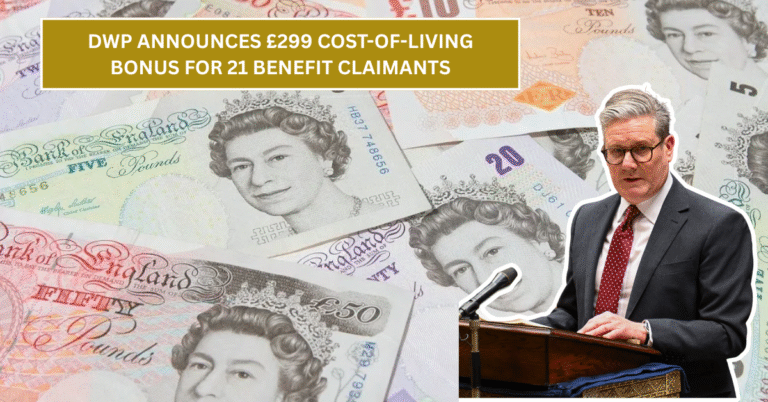
Retirement is something we all look forward to. After working for so many years, it’s important to know how much money we’ll get when we stop working. One major source of money during retirement is the State Pension. In the UK, the amount you get from the State Pension depends on how many years you have worked and paid National Insurance.
Many people don’t know that there’s a specific number of years you need to work to get the full amount of the New State Pension. If you don’t know how this works, you might be surprised later in life with a smaller pension. So let’s break it down in easy words. We’ll explain how many years you need, how to check your record, and what to do if you have gaps in your work history.
What Is the New State Pension
This Article Includes
- 1 What Is the New State Pension
- 2 How Much Is the Full New State Pension
- 3 How Many Years Do You Need to Work for Full Pension
- 4 Difference Between 10 and 35 Years
- 5 How to Check Your National Insurance Record
- 6 What Can You Do About Gaps in National Insurance
- 7 People Who May Get Pension Credits
- 8 Reached State Pension Age Before April 2016
- 9 Final Thoughts
The New State Pension is the amount of money the government pays to people who reach retirement age and have a history of paying National Insurance. It started on 6th April 2016. If you reached State Pension age on or after that date, you fall under this system.
This pension replaces the old basic State Pension and any additional payments from other pension schemes that were available earlier. It is meant to give you a set weekly amount, which could help support you when you stop working.
How Much Is the Full New State Pension
For the 2024 to 2025 tax year, the full New State Pension is £221.20 per week. That comes to about £11,502 each year. But not everyone gets the full amount. To receive the full pension, you must meet certain criteria related to your National Insurance contributions.
This isn’t a fixed amount for everyone. Your personal work history determines how much you will actually receive. Let’s see how you can qualify for the full weekly amount.
How Many Years Do You Need to Work for Full Pension
To get the full New State Pension, you usually need to have 35 qualifying years of National Insurance contributions. These years don’t necessarily need to be back-to-back. A qualifying year means a year when you either worked and paid National Insurance or you got credits due to unemployment, illness, or being a caregiver.
If you have less than 35 years, you can still receive some pension, but it will be less than the full amount. The minimum you need to qualify for any New State Pension is 10 years. That could be 10 years of work, 10 years of receiving certain benefits, or a mix of both.
Difference Between 10 and 35 Years
If you only have 10 qualifying years, you will get a much smaller pension. The amount is based on the number of years you have. So, for example, if you have 20 qualifying years, you’ll get around 20/35ths of the full New State Pension. This is why it’s important to try and get as close to 35 years as possible.
There are also cases where people already have over 35 qualifying years, especially if they worked for a long time before 2016. However, the government calculates the pension based on your unique National Insurance record, and sometimes you may get more or less depending on your situation.
How to Check Your National Insurance Record
Want to know how many qualifying years you have? It’s easy. You can check your National Insurance record online through the UK government website. Just log in with your Government Gateway account, and you can see how many qualifying years you have, and if there are any gaps.
Gaps happen if you didn’t earn enough in a year to pay National Insurance, or if you were out of work and not receiving benefits. If you see gaps, don’t worry. You might be able to fill them.
What Can You Do About Gaps in National Insurance
If you find that you don’t have enough qualifying years, you might still be able to fix it. The government allows you to pay voluntary National Insurance contributions for certain years. These are called Class 3 contributions. They help you build up your record, even after the year has passed.
But it’s not always required to fill all the gaps. Sometimes, those missing years won’t lower your pension much, especially if you already have close to 35 years. Also, some people get credits for certain situations, like being sick, unemployed or caring for a child. These credits can count as qualifying years too.
People Who May Get Pension Credits
You don’t always have to be employed to build your pension. If you’re getting certain benefits like Jobseeker’s Allowance, Employment and Support Allowance, or Carer’s Allowance, the government may give you credits. These credits count toward your qualifying years, usually without you needing to do anything.
Also, if you’re a parent getting Child Benefit for a child under 12, you can receive credits automatically. So even if you’re not working, your future pension may still be safe.
Reached State Pension Age Before April 2016
If you reached State Pension age before 6 April 2016, you will get the old State Pension instead of the new one. The rules for the old system are different, and the amount you get depends on different calculations. It’s important to understand which system applies to you, as the number of qualifying years and pension amounts are not the same.
Final Thoughts
Understanding how long you need to work for the full New State Pension is very important. The magic number is 35 qualifying years. If you’ve already reached that number, then you can relax a bit. But if you’re younger and still have time to plan, start checking your National Insurance record now.
Whether you work full time, part time, or spend time caring for someone else, make sure those years count. If there are gaps, don’t panic. There are still ways to make up for them. Planning ahead today will give you peace of mind in the future.






